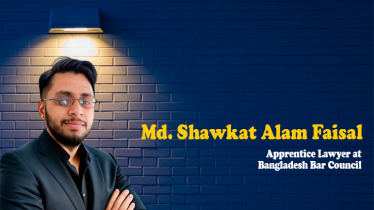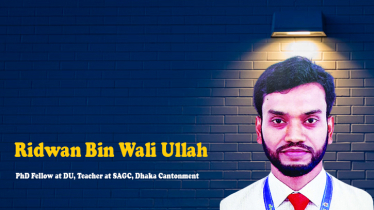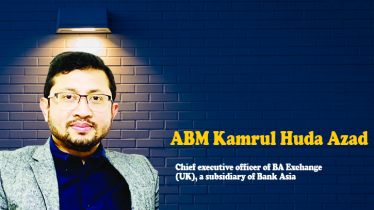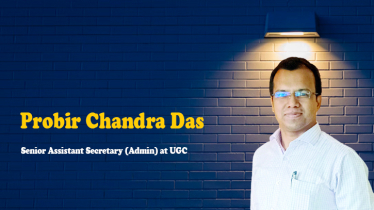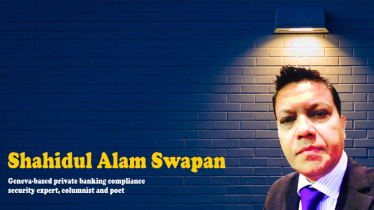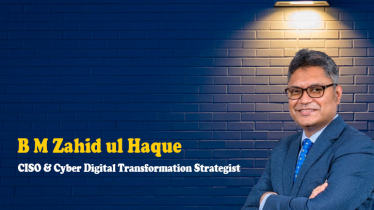
After Pakistan was born in 1947, more than two decades, the Pakistani rulers used fear, intimidation, and murder to brutally oppress the Bengalis who sought justice and equality from them. But the most brutal, ugly, desperate, and vicious form of aggression happened due to them in our history in 1971. Never before in history has such a sweeping fervour for freedom expressed itself in great mass movements and mass armed struggles which drove down the bastions of Pakistani President Yahya Khan’s empire.
This wind of change blowing throughout Bangladesh was no ordinary wind. It was a raging hurricane against which the old order of the Pakistani Military Junta and their local brutal collaborators could not stand. The great millions of Bangladesh grew impatient of being hewers of wood and drawers of water and were in an armed rebellion against oppressive Pakistan’s Army. The year 1971 saw the emancipation of the Bengali nation which finally witnessed the total liberation of the country Bangladesh from the brutal Pakistani rule and their exploitation except Mirpur area of Dhaka.
M.E. Estemil said, “National freedom is an expensive gift always worth fighting for. Even if it costs us!” And undoubtedly, we paid a very high price to gain our motherland. Bangladesh was born on December 16, 1971, after a 9-month-long war having or covered with or accompanied by blood because of a large-scale massacre by brutal Pakistan’s Army and their local cruel mango twigs. But Mirpur, an important part of the metropolitan Dhaka city, was occupied by the Biharis (non-Bengalis) butchers from early March to January 30, 1972. The place of Mirpur was finally liberated on January 31, 1972. Hence, January 31 is generally known as the Victory Day of Mirpur in Bangladesh.
But this year, the day should not have passed silently like the previous years. So many precious lives including the lives of eminent journalist Shahidullah Kaiser, noted filmmaker and novelist Zahir Raihan, and famous poet Meherunnisa were brutally slaughtered in Mirpur area before it was liberated from the cruel clutches of the non-Bengalis (the Bihari people) and some Bangla speaking Pakistanis like QaderMolla and the likes of him belonged to the criminal organisation, Jamaat-e-Islami.
It is very sad that no words for it were from any corner of the country on this very important day in our History of the War of Liberation in the past. But we had to bear witness to the worst of human brutality and atrocity during that time in that important area and throughout Bangladesh. Like John Burns, we wish to say, “We are depressed rather at the wave of brutality sweeping over the country” during our nine months of a long struggle to achieve Bangladesh. During the past several years, I only heard the roaring voice of Syed Shahidul Haque Mama (who died a few years back) from abroad, the 1971 war veteran and who actively participated in all operations to free Mirpur from those hyenas.
The biggest threat against the survival of humanity is not only brutality and unkindness, it is also stupidity and selfishness, but we really encountered horror, terror, brutality, mass killing, and genocide from an opposing Pakistan’s military force and a hostile group of local people supported by them who used our holy religion-Islam to annihilate us from this sacred soil of ours.
The war against the tyrannical rule of the Pakistani commands in 1971 was truly our mankind’s war of liberation. We are sorry for those who have never had the experience of seeing the victory of a national liberation struggle, and we should feel cold contempt for those who jeer at it.
According to the Asia Times, at a meeting of the military top brass in March 1971, Pakistan’s military dictator President Yahya Khan declared, "Kill 3 million of them and the rest will eat out of our hands." Then, on the night of 25 March, the Pakistani Army launched “Operation Searchlight” to crush Bengali resistance wherever found in this country; the Bengali members of military services were disarmed and killed, students and the intelligentsia were systematically liquidated and able-bodied Bengali males just picked up and were gunned down.
Mama Guerilla Bahini Chief Syed Shahidul Haque Mama recounted, “On March 27, 1971, Abdul QuaderMollah, Hasib Hasmi, Abbas Chairman, Akhter Gunda, Nehal and many others killed poet MeherunNesa, her brothers and mother and chopped their bodies into pieces in Mirpur. Akhter Gunda and his accomplices forcibly brought one Pallab from Thathari Bazar to Muslim Bazar in Mirpur. Then Akhter and his accomplices cut his fingers and hung him up on a tree and killed him mercilessly.” He also said, “QuaderMollah and his accomplices took part in the election campaign in 1970 for the “infamous” Ghulam Azam, the-then Ameer of East Pakistan Jamaat-e-Islami and a candidate of the Mirpur area for members of the Pakistan National Assembly.”
The enemies were the Pakistan army personnel, Jamaat-e-Islami men, Al-Badr men, Al-Shams men, and Razakars. At the fag end of our glorious War of Independence in 1971, the Biharis, Pakistan’s Military personnel, Jamaat-e-Islami along with the members of IslamiChhatra Sangha (now IslamiChhatraShibir), the the-then student wing of Jamaat built a strong resistance in Mohammadpur and Mirpur areas.
Jamaati gangsters convinced the Biharis that Bangladesh would turn into a part of Pakistan once again. A fearless freedom fighter Mama recollected that on December 17, 1971, he recovered the bodies of martyred intellectuals from the Rayerbazar killing field; and he said, “I found a small sack full of human eyes.” He further added that they picked up many killers who were hiding in Mohammadpur and following their information, they recovered the bodies of hundreds of intellectuals from the brick kilns of Rayerbazar. We know very well that the martyred intellectuals were our best sons of the soil of Bangladesh. The killing of intellectuals was a clear manifestation of the grave brutality unleashed by the Al-Badrs, Al-Shams, and Razakars.
According to the celebrated Journalist and columnist Syed Badrul Ahsan (SBA), “Let us get the facts straight. When Bangladesh stood liberated, as a whole, on December 16, 1971, there were yet small pockets where Pakistan's defeated soldiers were putting up a last-ditch resistance. That resistance would come to an end within days. But there was, unbelievably, one small portion of the country which non-Bengali collaborators of the Pakistan occupation army kept in their grip for about one and a half months after liberation.” And it was the place of Mirpur.
SBA further added, “There is Quazi Rosy to tell you all about it. And there is Syed Shahidul Haque, popularly known as Mama, to remind you of the gathering gloom which would descend on the Bengalis inhabiting Mirpur in the stirring times that were in 1971. Even as a resurgent Bengali nation, led by Bangabandhu Sheikh Mujibur Rahman, brought Pakistan to a grinding halt in March 1971, the non-Bengalis in Mirpur went on a spree of coercion and intimidation of the Bengali population in the locality”.
According to Christopher Hitchens, “Freedom is the decision to live and die, doing what you love” we decided to die; we decided to live and we decided to do what we loved in 1971. And we loved to attain independence from the shackles of Pakistani rule marked by unjust severity or arbitrary behaviour and we finally achieved Bangladesh. Mirpur was a heartless terror from 1971 till the end of January 1972. Yes. Terrible, and...A wise saying has spelled out, “When somebody challenges you from the wrong path, fight back.” And our freedom fighters fought back those cruel devils valiantly with patriotism and liberated Mirpur. It was a milestone in the annuals of our struggle for freedom from the Pakistani regime.
In man - in the history of mankind, this has happened many times, and occupation leaders cling on to the land that they are occupying. People fight to liberate their land. But in the end, the people will be what achieves victory. Brutal and heavy acts must be fought back suitably and vanquished by patriotic forces. Our people stood up as best they could against the disgusting stupidity and brutality of the Pakistani Military.
It was a fight to the bitter end, one in which we are defending our ideals or beliefs. Eons of suffering, brutality, and struggle have paved the way through the corridors of time to create this moment, where we now exist as an exalted expression of lives. According to George Weah, “My fellow revolutionaries; liberation is a noble cause. We must fight to obtain it” our people took it as a noble cause and so, we have won it.
Mirpur liberated us from darkness to walk in the glorious light. We should not miss celebrating the good days like Mirpur Victory Day with pureness and due solemnly because there were brutal days in the past. Like Paulo Freire, we wish to say, “Looking at the past must only be a means of understanding more clearly what and who they are so that they can more wisely build the future.”
In closing, we wish to use the words of eminent journalist Zulfikar Ali Manik, “It is impossible to forget the grief of the gruesome killings of 1971 but this time we at least have the consolation that we could ensure justice.” And justice has been happening in the country though belatedly. We should pray for the departed souls to reside in Heaven in peace who were brutally murdered by those lummoxes before the liberation of Mirpur on 31 January 1972. We also should commiserate for the families of those victims.
The writer is a front-line freedom fighter of the 1971 war field, and an independent political analyst, who writes on politics, political and human-centred figures, and current and international affairs.
Daily Messenger/MI


